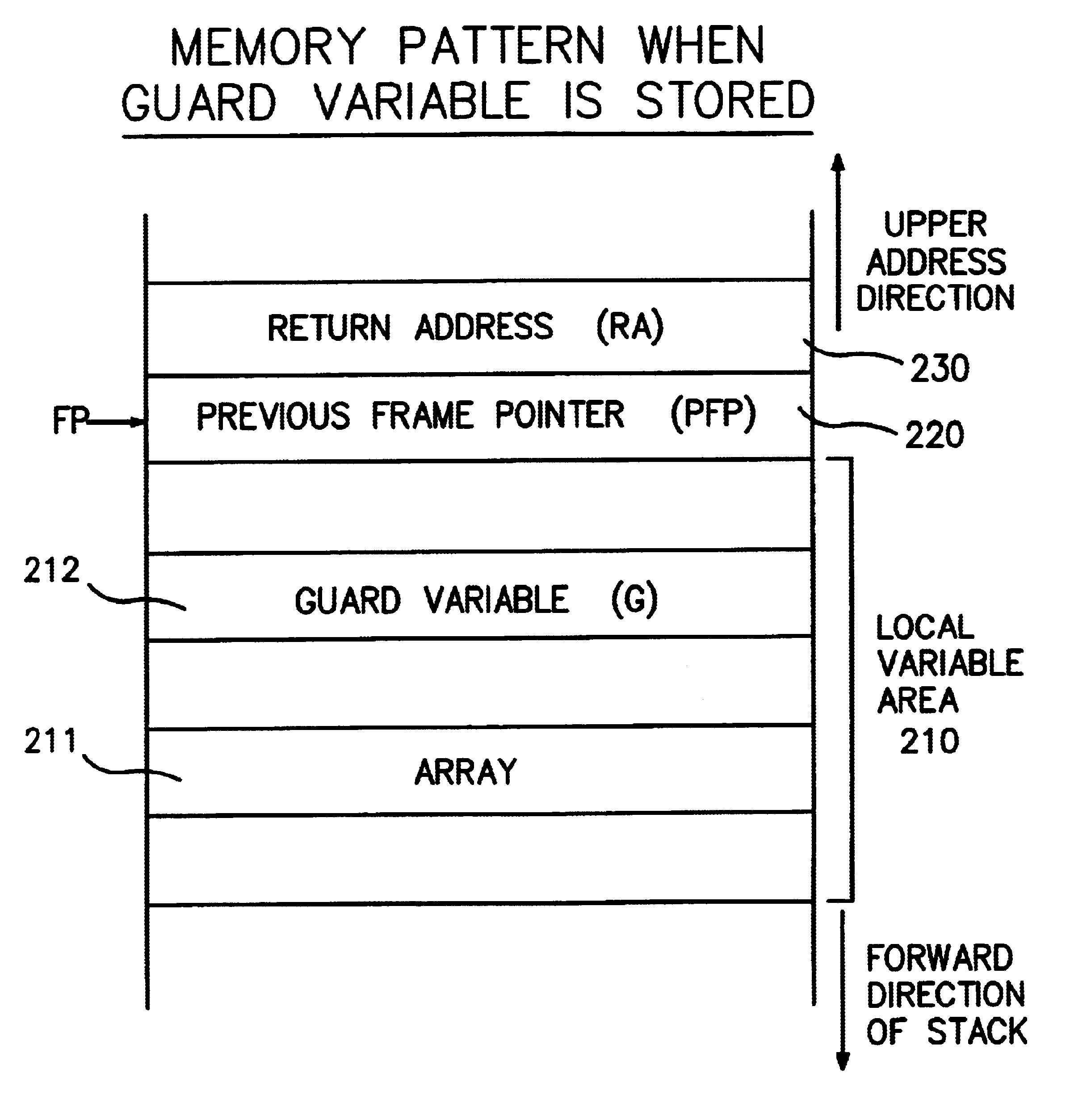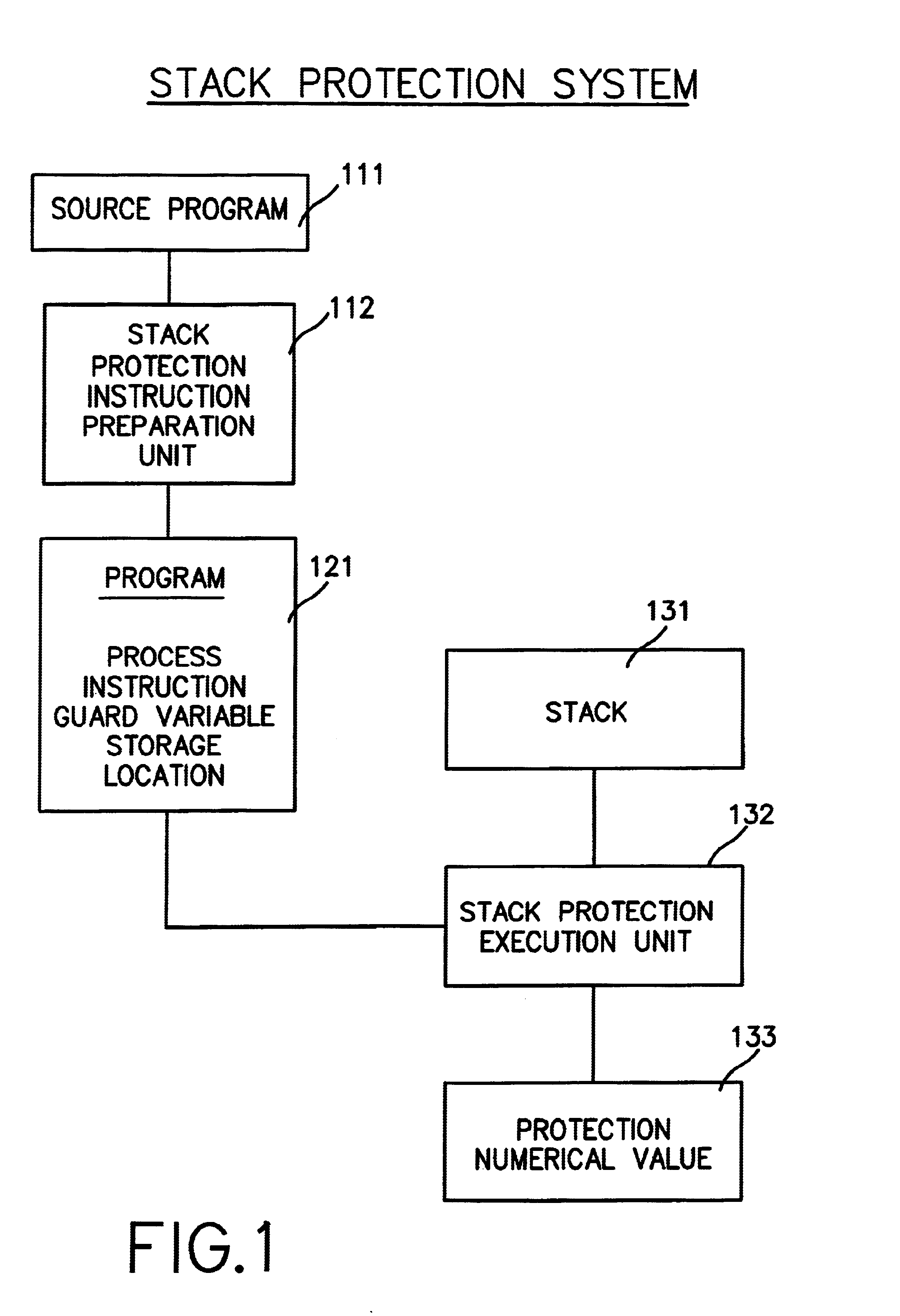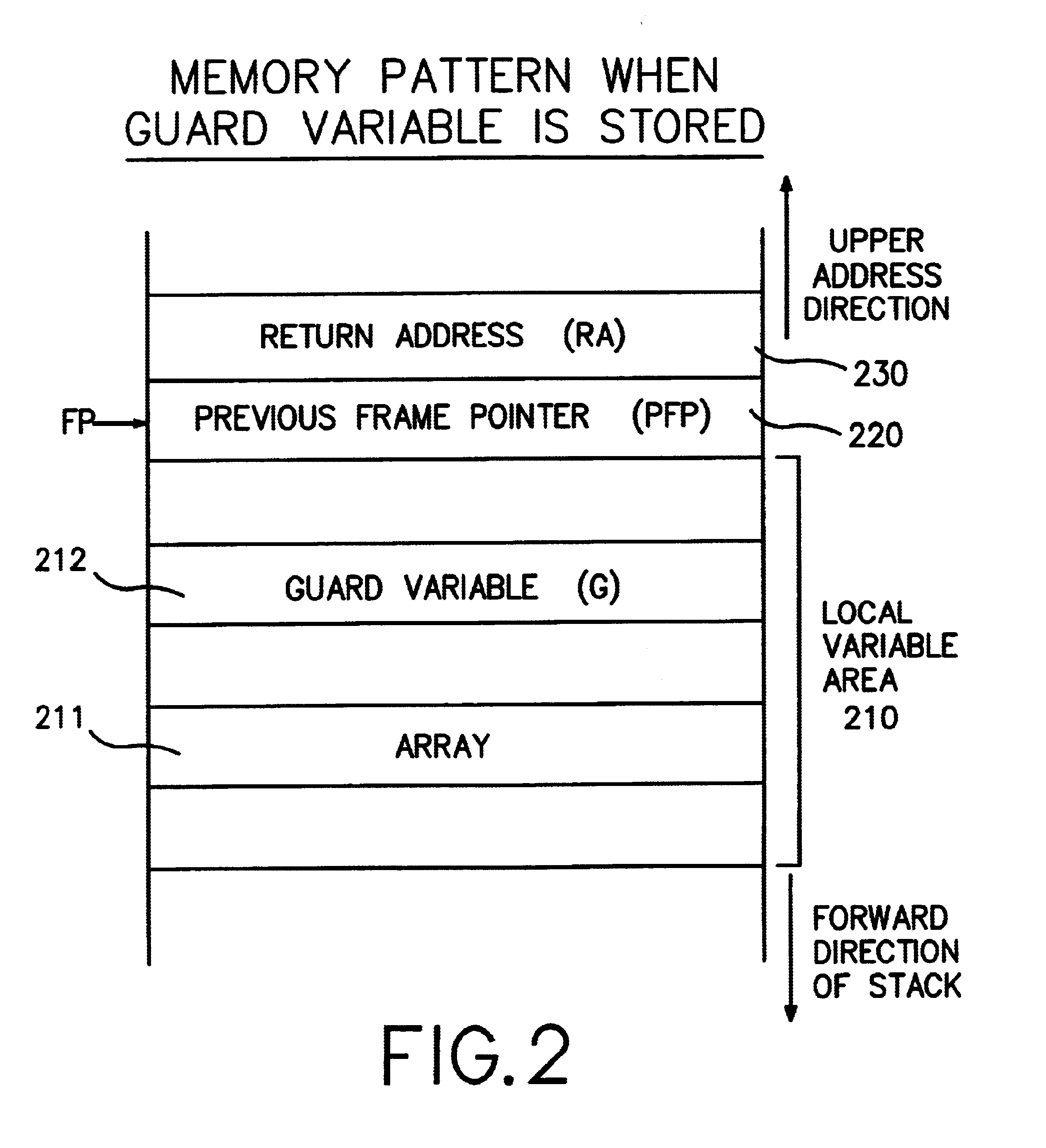Memory device, stack protection system, computer system, compiler, stack protection method, storage medium and program transmission apparatus
- Summary
- Abstract
- Description
- Claims
- Application Information
AI Technical Summary
Benefits of technology
Problems solved by technology
Method used
Image
Examples
Embodiment Construction
[0063]The present invention will now be described in detail during the course of an explanation of the preferred embodiment, given while referring to the accompanying drawings.
[0064]First, an overview of the present invention will be given. In a memory pattern (allocation of memory areas) for the execution of a program, a guard variable, which is a special value provided to protect a program counter from a stack smashing attack, is inserted between a previous frame pointer (PFP) in a stack and a data array in a local variable area. During a function return process, the validity of the guard variable is examined to confirm the presence or absence of a stack smashing attack.
[0065]A stack smashing attack involves the loading of data into a local variable, and when boundary checking is incomplete, the stack area above the local variable is destroyed. Thus, when a stack smashing attach occurs at a stack into which a guard variable has been inserted, between the previous frame pointer and...
PUM
 Login to View More
Login to View More Abstract
Description
Claims
Application Information
 Login to View More
Login to View More - R&D
- Intellectual Property
- Life Sciences
- Materials
- Tech Scout
- Unparalleled Data Quality
- Higher Quality Content
- 60% Fewer Hallucinations
Browse by: Latest US Patents, China's latest patents, Technical Efficacy Thesaurus, Application Domain, Technology Topic, Popular Technical Reports.
© 2025 PatSnap. All rights reserved.Legal|Privacy policy|Modern Slavery Act Transparency Statement|Sitemap|About US| Contact US: help@patsnap.com



